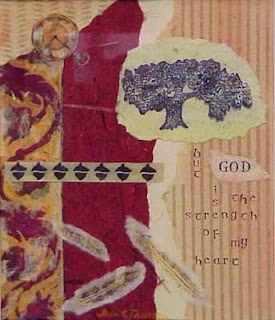While Jesus was in Bethany in the home of Simon the Leper, a
woman came to him with an alabaster jar of very expensive perfume, which she
poured on his head as he was reclining at the table.
When the disciples saw this, they were indignant. “Why this
waste?” they asked. “This perfume could have been sold at a high price and the
money given to the poor.”
Aware of this, Jesus said to them, “Why are
you bothering this woman? She has done a beautiful thing to me. The poor you
will always have with you, but you will not always have me. When
she poured this perfume on my body, she did it to prepare me for burial. Truly
I tell you, wherever this gospel is preached throughout the world, what she has
done will also be told, in memory of her.” Matthew 26:6-13 (see also Mark
14:3-9; Luke 7:36-50; John 12:1-8)
Wherever this gospel is preached…Mary’s “beautiful” act was
so significant to Jesus that he made it part of his Good News. Is it truly even the Gospel without her
story? Men tried to stop her but Jesus
told them to “stop bothering her.” When Mary
of Bethany sat at Jesus’ feet as a rabbinical student, Jesus told her sister
Martha, who was trying to get her into the kitchen, to leave her alone—someone was
always trying to deter her but Jesus said that, “Mary has chosen what is
better, and it will not be taken away from her” (Luke 10:38-42).
The perfume she lavished on Jesus was from the little pink-flowering
spikenard, or ‘nard plant that was imported by the Roman Empire from the Himalayas! In the lower left of
the collage, I’ve drawn the Himalayas.
No wonder it was worth a year’s wages—between the distance and the
amount of tiny plants it took to make the perfume; can you imagine pouring out a perfume that cost in the five or six
digits today? Nard was valued as a comfort for those in deep mourning, so
suitable for anointing Jesus for burial.
That much perfume—a pint, would have permeated every corner of Simon’s
home! In the collage I’ve written, “Simon’s
house would never be the same.” Not only would the perfume linger in the
recesses for months but this “beautiful thing” would be remembered throughout
the world and all history—and it happened
in his house. I’ve collaged copies
of the Ten Commandments in Hebrew on Simon’s walls to represent the rigid
traditions Mary walked into; intricately hand-cut palm branches further set the
scene. On the purple waves of aroma, I’ve written the things that Jesus said in
Mary’s defense such as “Leave her alone.”
The alabaster bottle was valuable in itself but Mary broke it as Jesus’
body soon would be broken. I’ve
fashioned the alabaster bottle with flecked translucent paper after a first
century Roman bottle I saw in an art museum.
Jesus is on record as valuing women, their learning from him
and service for him—despite society norms.
Go ahead, be like Mary of Bethany and choose “what is better”; be lavish in your love for him.















